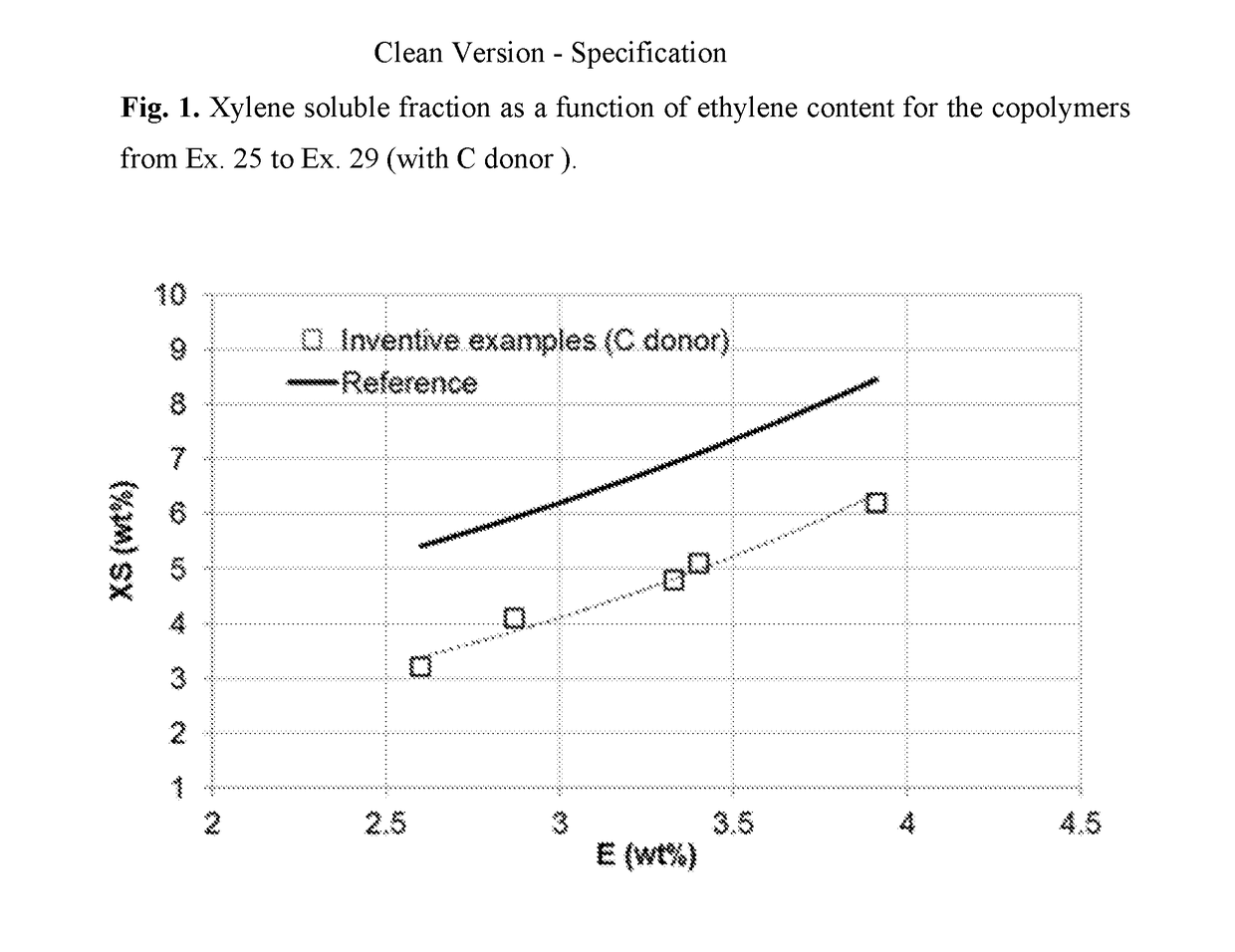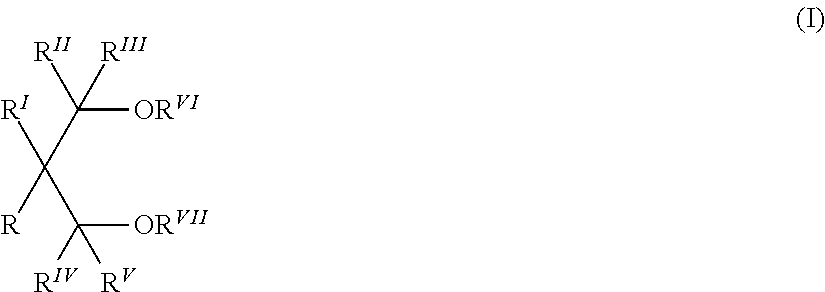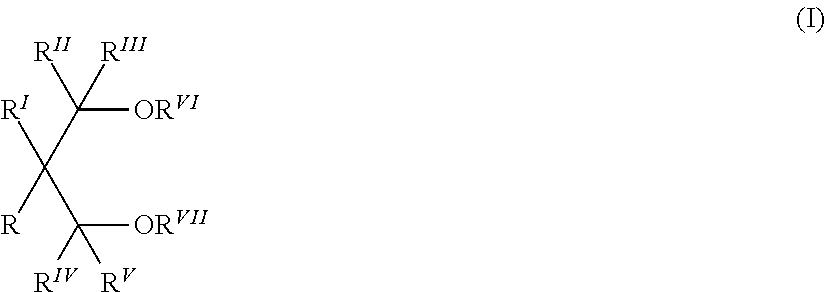Catalyst components for the polymerization of olefins
- Summary
- Abstract
- Description
- Claims
- Application Information
AI Technical Summary
Benefits of technology
Problems solved by technology
Method used
Image
Examples
examples
Characterizations
[0054]Determination of Mg, Ti
[0055]The determination of Mg and Ti content in the solid catalyst component has been carried out via inductively coupled plasma emission spectroscopy on “I.C.P Spectrometer ARL Accuris”. The sample was prepared by analytically weighting, in a “Fluxy” platinum crucible”, 0.1-0.3 grams of catalyst and 2 grams of lithium metaborate / tetraborate in a 1 / 1 mixture. After addition of some drops of potassium iodide (KI) solution, the crucible is inserted in a special apparatus “Claisse Fluxy” for the complete burning. The residue is collected with a 5% v / v HNO3 solution and then analyzed via ICP at the following wavelengths: magnesium: 279.08 nm; titanium: 368.52 nm.
[0056]Determination of Bi
[0057]The determination of Bi content in the solid catalyst component has been carried out via inductively coupled plasma emission spectroscopy on “I.C.P Spectrometer ARL Accuris”. The sample was prepared by analytically weighting in a 200 cm3 volumetric flas...
examples 25-29
Propylene / Ethylene Copolymerization
[0104]A 4 liter steel autoclave equipped with a stirrer, pressure gauge, thermometer, catalyst feeding system, monomer feeding lines and thermostatic jacket was purged with nitrogen flow at 70° C. for one hour. Then, at 30° C. under propylene flow (0.5 bar), a suspension containing 75 ml of anhydrous hexane, 0.76 g of AlEt3, 3.3 mmol of cyclohexylmethyldimethoxysilane (C donor) and 0.004-0.010 g of solid catalyst component, previously precontacted for 5 minutes, was charged. The autoclave was closed and hydrogen was added (3.2 NL in D donor tests, 1.6 NL in C donor tests) to target the desired MIL, as reported in Table 5. Then, under stirring, 1.2 kg of liquid propylene together with the required amount of ethylene (4 g) was fed during the raising of temperature from 30° C. up to 70° C. in about 10-15 minutes, and the polymerization was carried out at this temperature for two hours. Ethylene was fed during the polymerization in order to keep the pr...
examples 30-35
, C9-C10
[0105]A 4 liter stainless-steel autoclave equipped with a magnetic stirrer, temperature and pressure indicator, feeding line for hexane, ethylene, and hydrogen, was purified with nitrogen at 70° C. for 60 minutes. Then, a solution of 1550 cm3 of hexane containing 3.5 mmol of trialkyl aluminum (TEAL or TiBAL) was introduced at 30° C. under nitrogen flow. In a 200 cm3 round bottom flask were successively introduced 50 cm3 of anhydrous hexane, 0.9 mmol of trialkylaluminum and 0.020-0.030 grams of the solid catalyst component prepared according to procedure (A). After mixing 10 minutes at room temperature, the slurry was introduced under nitrogen flow into the reactor. The autoclave was closed, stirring was started and the temperature was raised to 75° C. Finally, hydrogen (4 bar partial pressure) and ethylene (7.0 bar partial pressure) were added. Polymerization was carried out at 75° C. for 120 minutes, keeping the total pressure constant by feeding ethy...
PUM
| Property | Measurement | Unit |
|---|---|---|
| Fraction | aaaaa | aaaaa |
| Percent by mass | aaaaa | aaaaa |
| Percent by mass | aaaaa | aaaaa |
Abstract
Description
Claims
Application Information
 Login to View More
Login to View More - R&D
- Intellectual Property
- Life Sciences
- Materials
- Tech Scout
- Unparalleled Data Quality
- Higher Quality Content
- 60% Fewer Hallucinations
Browse by: Latest US Patents, China's latest patents, Technical Efficacy Thesaurus, Application Domain, Technology Topic, Popular Technical Reports.
© 2025 PatSnap. All rights reserved.Legal|Privacy policy|Modern Slavery Act Transparency Statement|Sitemap|About US| Contact US: help@patsnap.com



